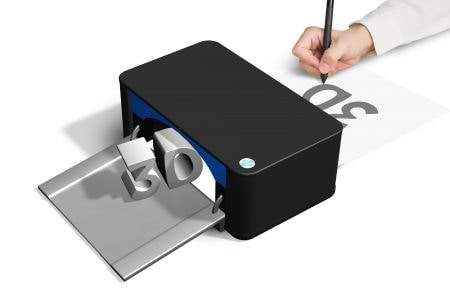In the 2012/2013 academic year, the Department of Education in the United Kingdom launched a pilot project to explore the potential of 3D printers in school curriculum at 21 schools.
Despite some early teething problems caused, in the main, by lack of familiarity with the technology, the project proved highly motivational for students of science, technology, engineering and mathematics (STEM) and was subsequently extended to a further 60 schools. In 2014, 3D printing was formally included in the design and technology curriculum.
The use of 3D printing in the sphere of design and technology that allows designs to be tested, evaluated and improved very quickly and so paves the way for a truly iterative design. The iterative design process, in turn, increases the proficiency of students with the 3D modelling software employed to create their designs. By printing only the best designs from their students, teachers can introduce an element of competition which closely mirrors that in the ‘real’ world, where only the best designs actually make it into production.
Of course, 3D printers are by no means restricted to the design and technology curriculum and can be applied to many other disciplines, including architecture, fine art and medical science, in which tangible 3D objects aid the learning process. This is particularly true of any discipline involving spatial intelligence, or the ability to generate and manipulate 3D images or models and draw accurate conclusions about them.
Commercially, 3D printing technology is revolutionising traditional manufacturing of everything from aerospace components to medical prosthetics and toys and is headed in many different directions. The presence of a 3D printer in a school indicates that the school is in touch with what is, after all, a global innovation. The sooner students start to learn the theory and practice of 3D printing, including other advanced skills, such as robotics, the better equipped they will be for jobs in the engineering industry and elsewhere later in life.
3D Printers in School Curriculum
Search
Recent Posts
- Phidgets VINT Hub gets a speed upgrade
- 3Pi+ Mobile Robot OLED display
- Data Acquisition and Control Hardware - a LabJack User Guide
- The all new goBILDA range, the prototyper’s favourite build system is now available in metric.
- NED Robot a NEW - low cost 6-axis Cobot for Education, Vocational training & Research laboratories
Archives
- February 2022
- December 2021
- September 2021
- March 2021
- February 2021
- January 2021
- October 2020
- March 2020
- January 2020
- December 2019
- November 2019
- June 2019
- May 2019
- April 2019
- March 2019
- February 2019
- January 2019
- November 2018
- October 2018
- September 2018
- August 2018
- July 2018
- January 2018
- November 2017
- September 2017
- August 2017
- July 2017
- January 2017
- August 2015
- May 2015
- March 2015
- February 2015
- January 2015
- December 2014
- November 2014
- October 2014
- September 2014
- August 2014
- July 2014
- June 2014
- May 2014
- April 2014
My Wish List
